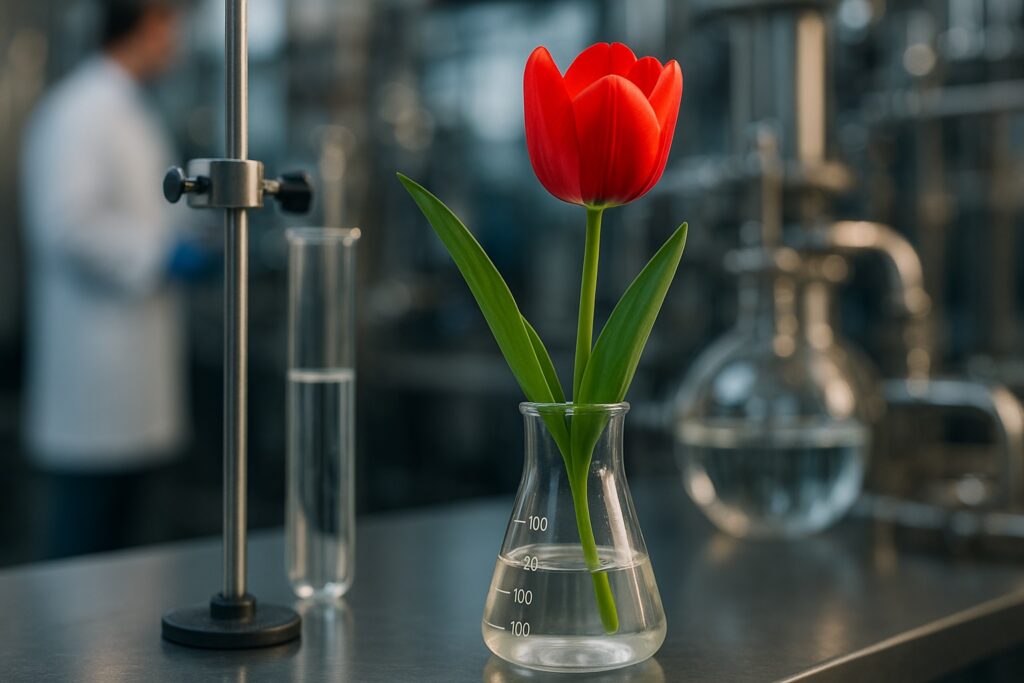AUTHORS:
A. Nigl, V. Delsoglio, L. Sovic, M. Grgić, L. Malihan-Yap, K. Myrtollari, J. Spasic, M. Winkler, G. Oberdorfer, A. Taden, I. Anic, R. Kourist
Angew. Chem., 2025, 2025, Angewandte Chemie International Edition, e20250346
The biocatalytic synthesis of valuable chemicals offers a sustainable alternative to conventional chemical routes. This work focuses on improving a critical hydroxylation step in the synthesis of Tulipalin A, a small lactone with an exo-olefin group, that has significant potential as a polymer precursor.
The target reaction involves the regio- and stereoselective hydroxylation of an isoprenol derivative, a challenging transformation to achieve by using chemical catalysts. The transmembrane alkane monooxygenases AlkB, specifically the AlkB system from the bacterium Pseudomonas putida GPo1, were identified as promising biocatalysts. AlkB catalyzes the hydroxylation and receives the electrons needed for the reaction from the associated rubredoxin AlkG and rubredoxin reductase AlkT.
Even though AlkB catalyzed the terminal hydroxylation with excellent regio- and chemoselectivity, the activity towards the non-natural target substrate, isoprenyl acetate, was not ideal for industrial application. Protein engineering presents a solution; however, the limited understanding about the structure and mechanisms of these transmembrane enzymes, along with difficulties in their handling, creates inherent challenges for their efficient engineering.
Nevertheless, we employed rational design based on de novo structure prediction. Residues within or near the active site and substrate access channels of AlkB were selected for site-directed mutagenesis. A library of AlkB variants was generated and screened for improved catalytic performance with the target substrate. Several AlkB variants demonstrated significantly enhanced activity compared to the wild-type enzyme, leading to increased product formation rates and higher yields of the desired hydroxylated product, while still maintaining the excellent regio- and chemoselectivity.
The selective hydroxylation of the isoprenol derivative by AlkB was coupled to a two-step oxidation by an alcohol and aldehyde dehydrogenase pair from the bacterium Castellaniella defragrans. The formed carboxylic acid was then converted to the target molecule Tulipalin A. The enzyme cascade represents a new biosynthetic route and is a significant step towards establishing a robust biocatalytic production process for the polymer precursor Tulipalin A. This research provides valuable insights into the engineering of transmembrane monooxygenases for non-natural substrates and highlights the potential of tailored biocatalysts for complex oxidation reactions in industrial biotechnology. This advancement can lead to more efficient, potentially greener production methods for the valuable polymer building block, contributing to more sustainable industrial processes and expanding the portfolio of accessible bio-based chemicals. Future work will focus on optimizing the enzyme cascade and integrating it into a microbial chassis for the fermentative production of Tulipalin A.
